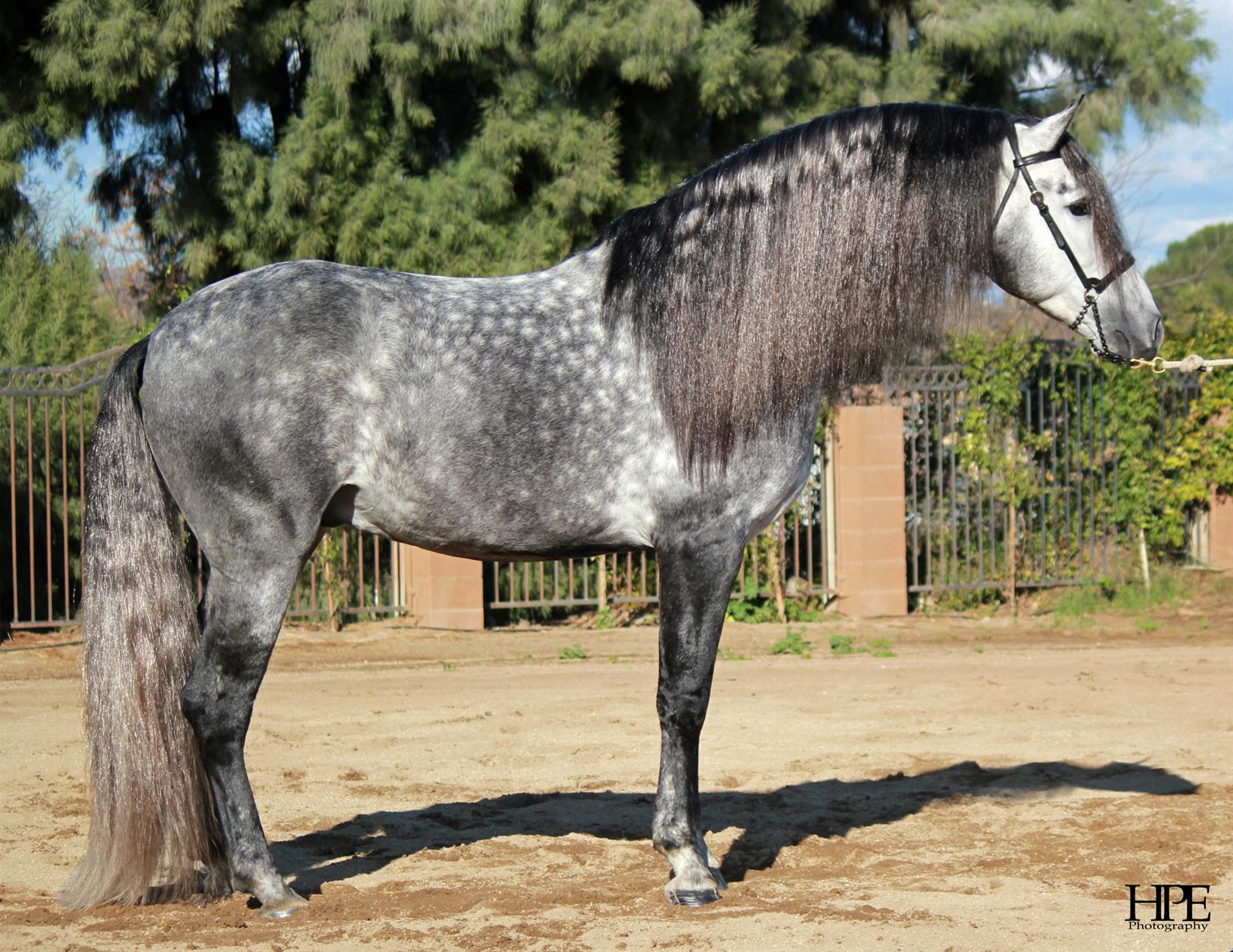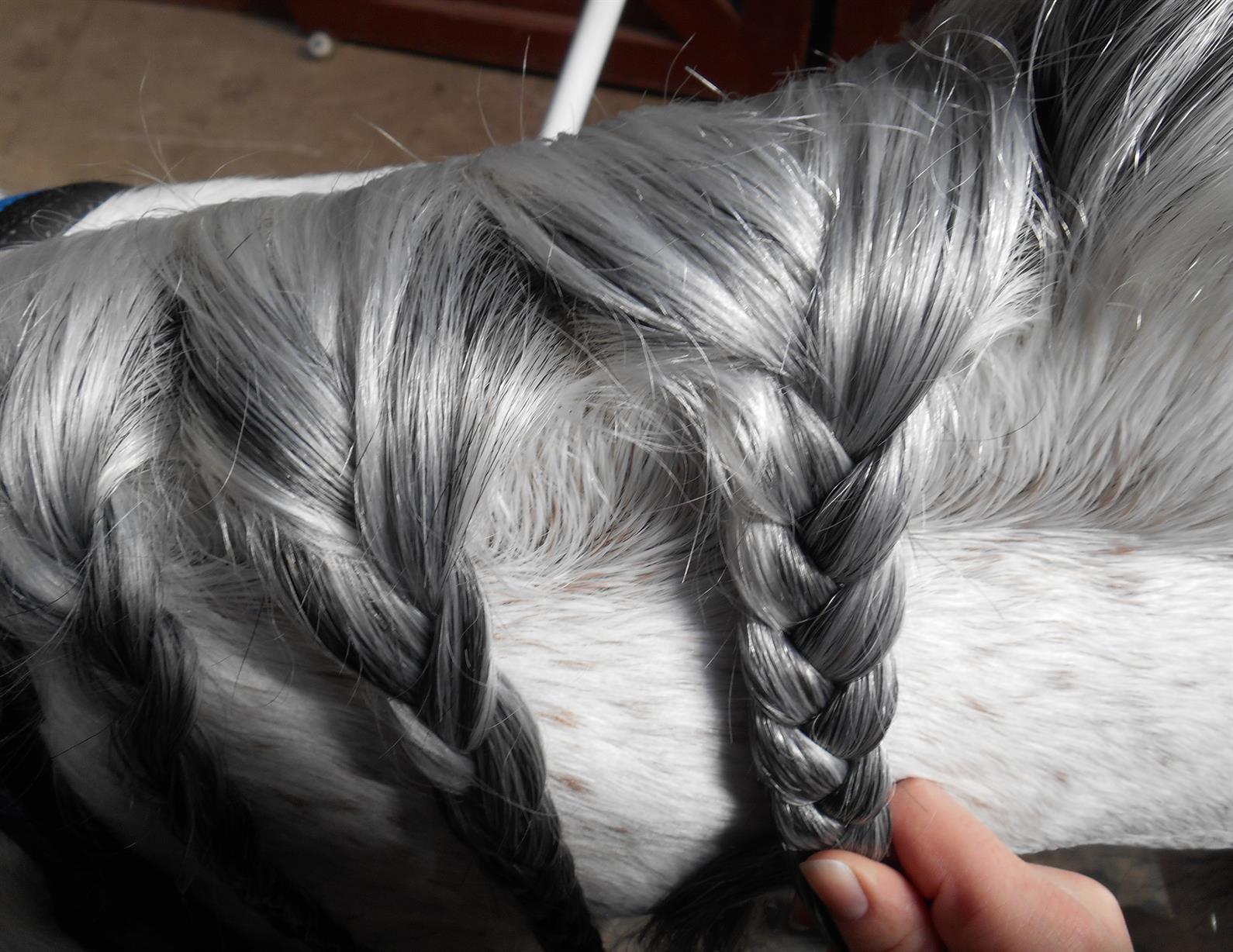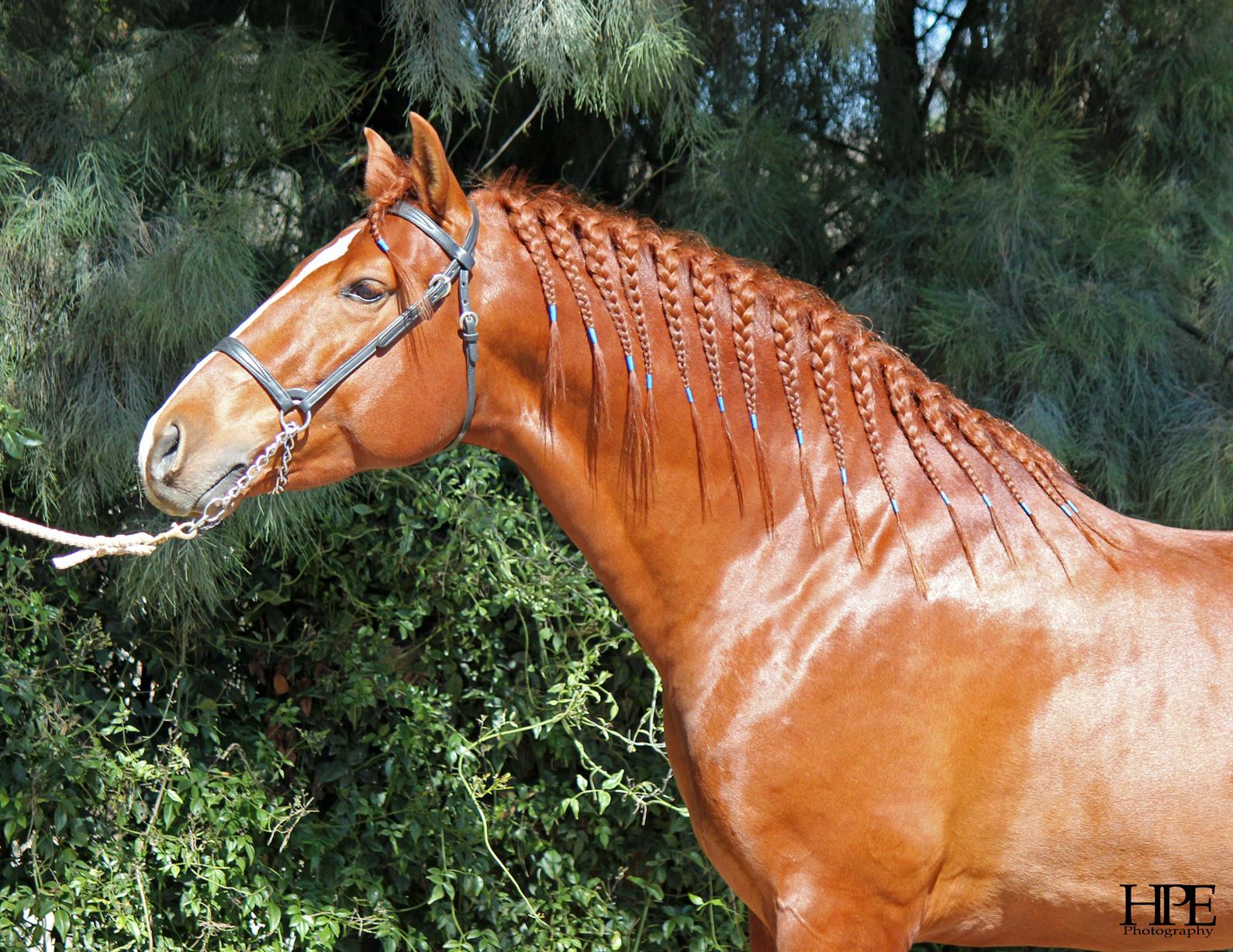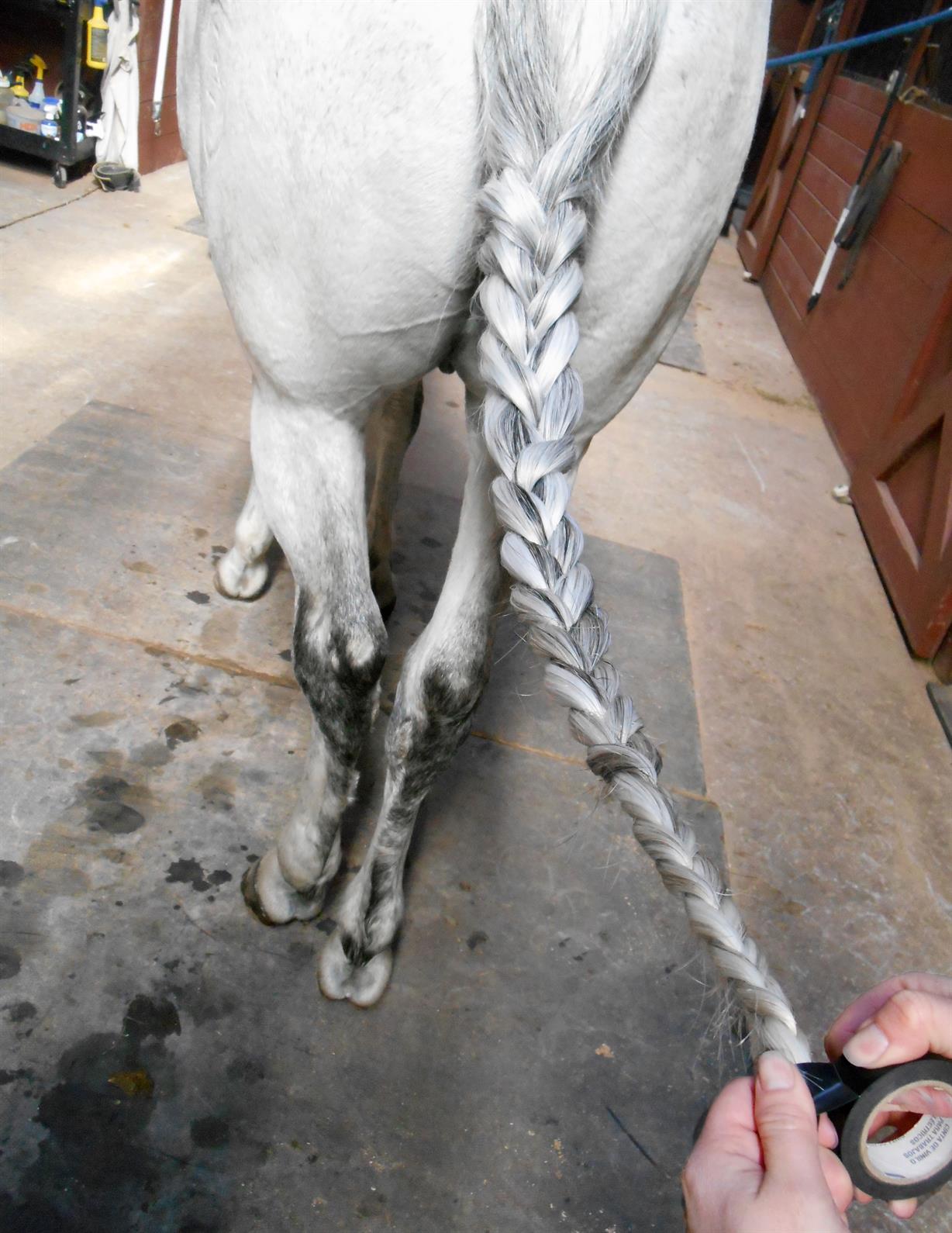
With their striking looks, the Andalusian and Lusitano breeds seem to be plucked from a fairy tale. Both breeds have an abundance of hair, with enviable manes and tails. How do their owners, trainers, and grooms keep these voluminous, lush manes and tails up to par? With a consistent and thorough grooming regimen. We asked Erica Peet—Andalusian owner, trainer at Peet Equestrian and a member of the International Andalusian & Lusitano Horse Association—for her top five tips to promote strong, healthy hair for any horse.
Andalusians and Lusitanos, famous for their romantic, flowing locks, have a rich history, dating back to 15th-century Spain. They have been meticulously preserved over the years, and many owners still adhere to the historic mane and tail standards. Keeping these voluminous, lush manes and tails up to par is a considerable task, requiring a consistent and thorough grooming regimen that can help promote strong, healthy hair in horses of all breeds.
Clean and Condition
“When washing the mane, concentrate on the base at the roots where the mane grows out. Really massage and scrub the roots to break up the dirt and oil deposits that hide there and to help encourage blood flow,” said Peet. Always flip the mane over to scrub the underside, as that is usually the dirtiest part of the mane. Don't ignore it just because you can't see it. This is important when you scrub it and when you rinse any product out of the hair.

“Don’t go too heavy with conditioner,” Peet cautioned. “Lightly add water to the conditioner so it spreads throughout the hair without getting clumpy. This helps keep the conditioner from being missed in the rinse process. The oils from the conditioner attract dirt, so it is important to rinse well.”
Peet highly recommends using a leave-in conditioner once the hair is dry to replenish any natural oils stripped in the cleansing process. This helps enhance the health and luster, she said.
This treatment can also be applied to tail care. When washing the tail, make sure to focus on massaging and scrubbing the dock to remove dead skin, and always rinse thoroughly to discourage oil buildup. “The dock is where all the dead skin, dirt, and dander will accumulate. Sometimes horses that rub are doing so because it is too dirty in there,” said Peet.
Go Natural

Avoid shampoos and conditioners heavy in sulfates, which strip the hair of important natural oils. Instead, elect for a product with a base of natural ingredients, such as tea tree and coconut oils to hydrate the hair. Peet encourages people to stick to products within their budget. “There are so many products out there! Just go with what fits in your budget and what is working best for you,” she said. "My most important grooming product is my leave-in conditioner, so that is the product I tend to spend my money on."
Also be aware of the climate where you live when selecting products and managing mane and tail care, reminds Peet. “Different products work differently in different regions,” she explained. “Adapt your grooming routine to your surroundings. In dry climates, I need to focus on moisturizing the hair, but in humid climates I need to closely monitor the hair for buildup resulting from the natural moisture of the environment.”
Braid to Reduce Breakage
After cleansing and conditioning, braid the mane to reduce breakage from over-brushing and for protection from dirt, matting, and bleaching from the sunlight. “I take small, two-inch sections of hair to prevent tension on the outer sections of the braid,” explained Peet. “I start the braid loose—again, to prevent tension at the root base—and move to a tighter weave after several inches.”

While there are no shortcuts for growing the hair, braiding is a useful tool and key for maintaining a horse’s mane, especially for horses who do not experience much growth or thickness.
For the tail, Peet recommends braiding from the end of the dock down, starting loose for a few inches and then tightening the braid as you move farther away from the dock.
Consistency in the grooming routine plays the biggest role in seeing results. Peet recommends repeating the process described above every 10 to 14 days.
“Washing too often dries out the mane and creates breakage,” she said. “However, with all the movement of the horse on a daily basis, waiting too long will result in the hair bunching inappropriately and a buildup of dirt, so when you take the braids out you will have a ratty mess to comb through.”
A common frustration is training a mane it to lie flat on one side. Peet recommends a regimen of thorough washing and braiding to encourage manes to lie on one side and to preserve the overall health of the hair. "This is a process I am currently going through with my own mare, Bravata, whose mane I have been allowing to grow out after roaching it,” Peet said. “Left to its own, it would be quite unruly and split to both sides of her neck, which is not a very pretty look."
Tools of the Trade

Peet has a number of tools she considers essential to her mane- and tail-care routine. A wide-toothed comb helps you avoid catching tangles and risking breakage. Using your fingers to gently pull small tangles and shavings out is also a good alternative to protect from breakage from brushing. Braid bags serve as a barrier to protect from environmental factors. Peet also advocates using electrical tape rather than rubber bands for braiding. “In my opinion, rubber bands get tangled in the hair and break the hair, while the electrical tape doesn’t stick to the hair too much and leaves little residue,” she explained. The leave-in conditioner also helps the brushing process by helping the knots slide apart a little easier. "I always mist my manes and tails with a little leave-in conditioner prior to brushing," she added.
Take Your Time
The most important thing you can do in your mane and tail care is to go slow. “Not every horse is blessed with the hair gene, such as my husband's gelding, Rocky, so for those horses in particular you want to make the extra effort to maintain that hair as best you can without ruining it,” said Peet.
When brushing, always start at the bottom, working your way up towards the roots, and take the time to use your hands more. "Using your fingers instead of a brush when separating knots will prevent breakage," Peet said. "Sometimes your brush is just going to rip the hair out, so it is important to take your time.”
Want more articles like this delivered to your inbox every week? Sign up here to receive our free Equestrian Weekly newsletter.
This article is original content produced by US Equestrian and may only be shared via social media. It is not to be repurposed or used on any other website aside from usequestrian.org.


